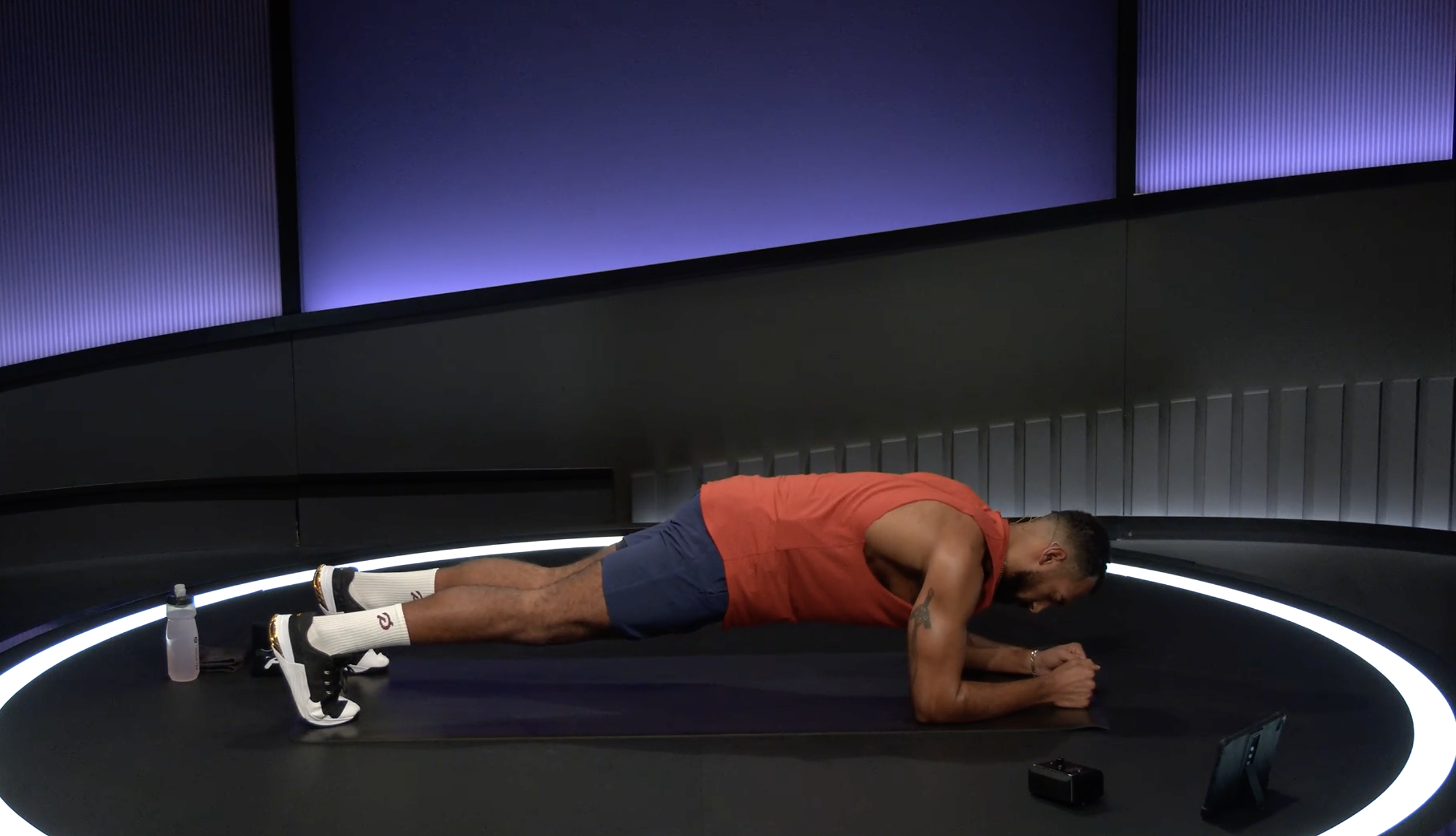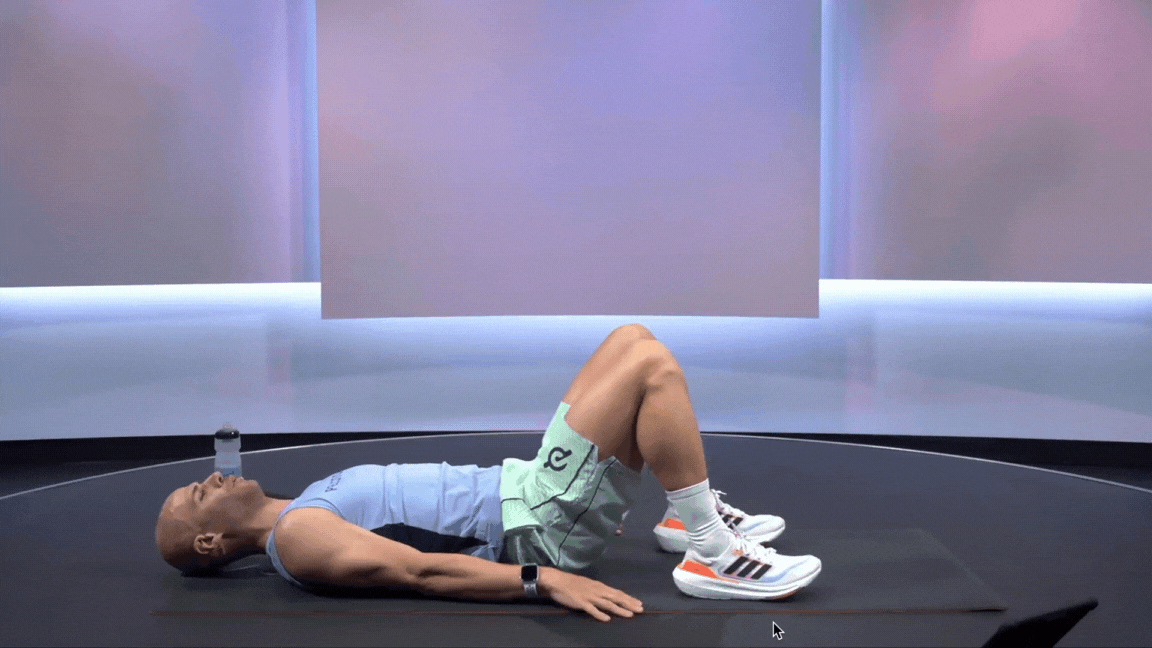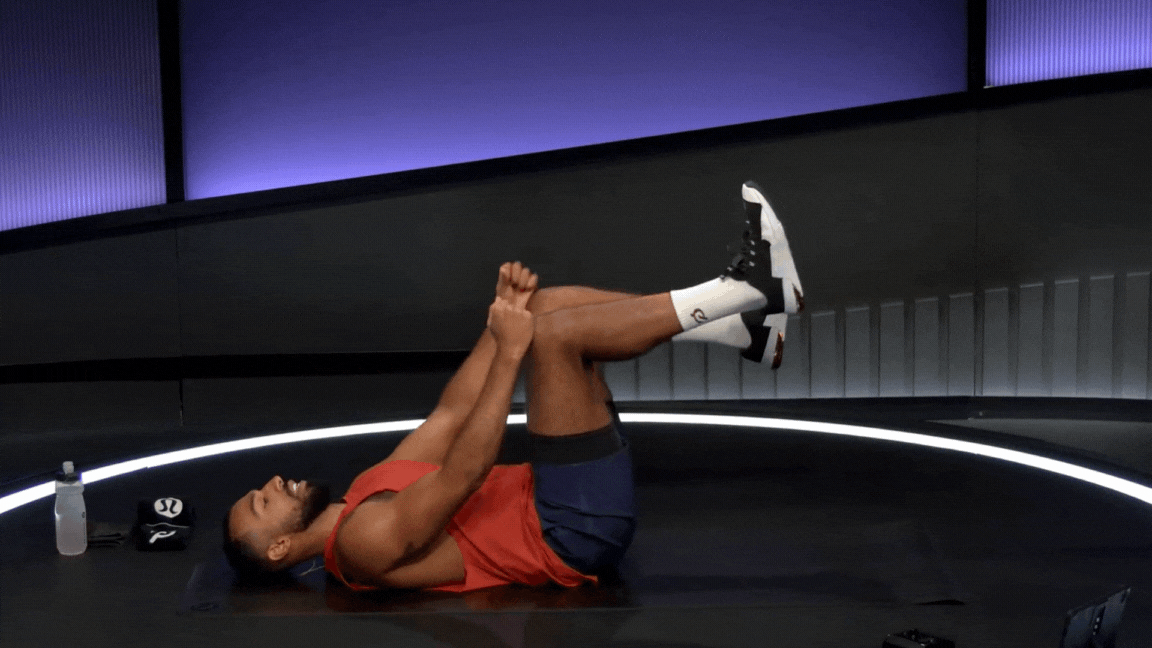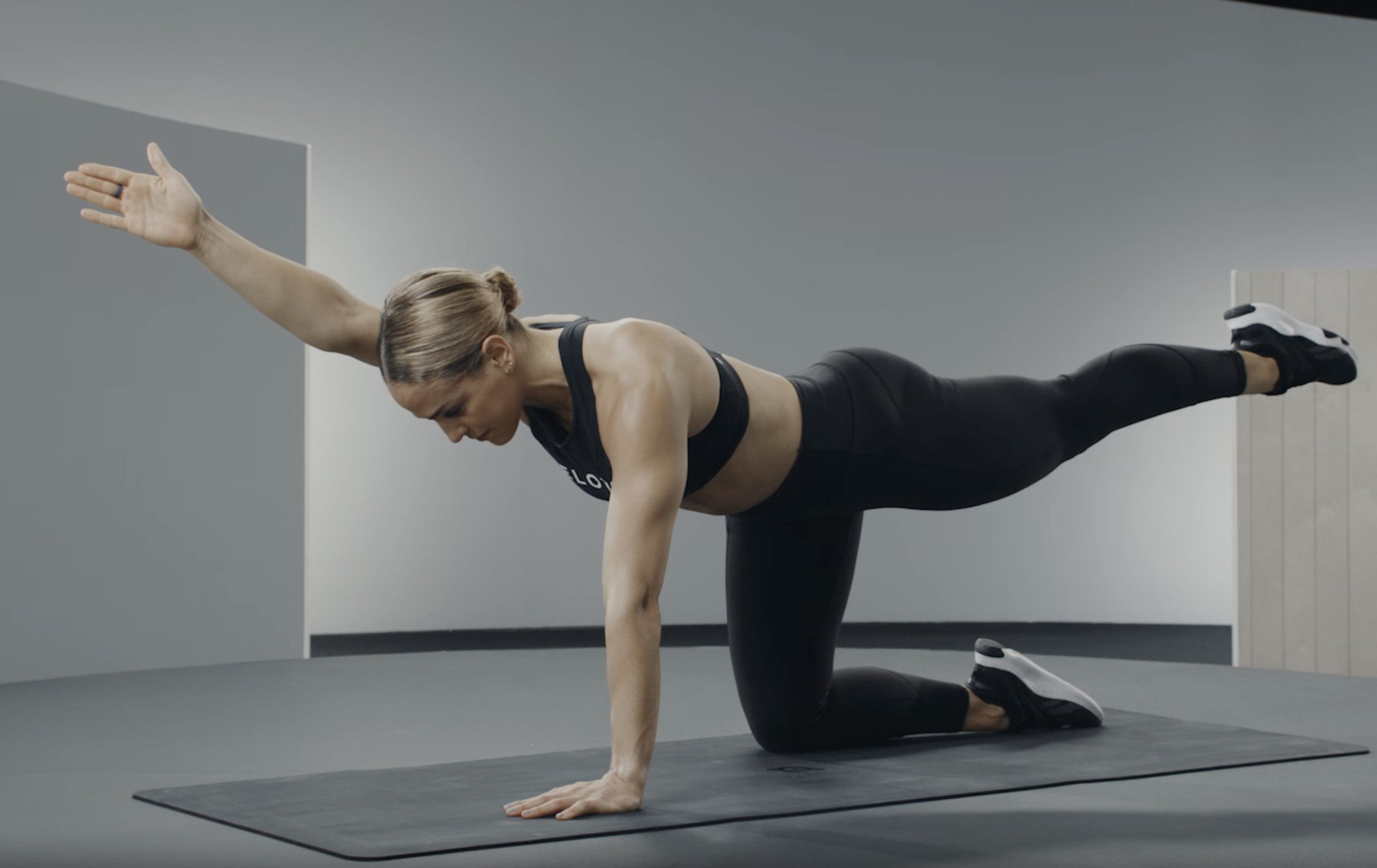
Jovo Jovanovic/Stocksy
The 13 Best Bodyweight Exercises for Beginners, According to Experts
No heavy weights needed.
By Amy Marturana Winderl•
What Are Bodyweight Exercises?
Benefits of Bodyweight Exercises
How to Choose the Best Bodyweight Exercises for Beginners
Chest and Back Bodyweight Exercises for Beginners
Arms and Shoulders Bodyweight Exercises for Beginners
Legs and Glutes Bodyweight Exercises for Beginners
Core Bodyweight Exercises for Beginners
Try These Bodyweight Workouts
You might assume that you need dumbbells, barbells, or other big, shiny weights to build strength or gain muscle mass, but your body can act as a powerful source of resistance on its own. Particularly during the early stages of your strength training journey, bodyweight exercises can help you focus on learning proper form and intentionally activating your muscles, setting beginners up for long-term success.
Here, experts explain why weight-free strength training workouts are effective and provide the best beginner-friendly bodyweight exercises to target each major muscle group.
What Are Bodyweight Exercises?
Bodyweight exercises allow you to build strength, stability, and coordination using only your body—no additional equipment required, Peloton instructor Jermaine Johnson says. “Bodyweight exercises allow gradual progression and are adaptable to different fitness levels, making them great for beginners,” he adds. Because you don’t have to worry about any weights, you’re able to focus 100 percent of your energy on your form.
The resistance, or load, comes from the weight of our own bodies, Carol Mack, a Cleveland-based physical therapist, says. You usually do this in three ways:
Using gravity as resistance, like when your arms work against gravity to lower your body to the ground with control as you do a push-up.
Exerting force against a surface, like when you press your back against a wall and your feet into the floor during wall sits.
Creating tension via the mind-muscle connection, like when you’re holding a high plank position and focus your thoughts on intentionally activating your core muscles.
Bodyweight exercises are an effective way to build strength, stability, and balance, Mack says. And yes, they’re also “enough” to build muscle, according to Jermaine. The key is to continually challenge your body by either adding reps or sets or progressing to a more challenging variation of the same movement.
Read more

Strength Train
I’m a Peloton Strength Instructor and These Are My Favorite Bodyweight Training Moves

Sculpt
Yes, Bodyweight Training Can Be Just As Effective As Lifting Weights—If You Know These Tricks

Beginners
Want to Work Out But Have No Clue How? Here Are the Exercises You Need to Get Started

Beginners
5 Ways to Get Over Gym Anxiety and Work Out with Confidence
Benefits of Bodyweight Exercises
Bodyweight exercises can help you make strides in the early days of your strength training journey. Here are some of the main benefits of bodyweight exercises for beginners:
They’re cost-effective since you don't need to buy any equipment.
They’re convenient, as you can do them anywhere (at home, at the gym, or even on vacation).
They promote body awareness and proper form, which helps you recognize when you’re ready to safely level up.
They can lower your risk for injury. Removing weights from the equation makes it easier to focus on your form, which can reduce your risk for injury. After all, there’s no chance you’ll lift a weight that’s too heavy while doing bodyweight exercises.
They’re efficient. If you move through bodyweight exercises quickly, they can double as a strength and a cardio workout.
They’re adaptable. You can almost always modify a bodyweight exercise to meet your current fitness level or available range of motion. For example, if a deep squat isn’t doable, you can opt for a partial squat instead.
How to Choose the Best Bodyweight Exercises for Beginners
When it comes to selecting bodyweight exercises for your strength training routine, you have no shortage of options. However, beginners should make sure the ones they select fall into the below categories.
Each move should be simple, meaning it doesn’t have multiple parts or feel difficult to perform safely on your own.
The exercise should be easy to execute. If you still don’t understand what to do after reading a few basic steps, consider swapping it for another move.
It should be foundational, meaning it trains a basic movement pattern (hinging at the hips, for example) that you’ll use for other exercises as you get stronger and more mobile.
Each move should engage major muscle groups. There’s a time and place for training tiny muscles, but when you’re just starting out with bodyweight exercises, you should focus on working the big muscle groups, which we outline below.
The exercise should have room for progression. The best bodyweight movements for beginners are manageable enough to do during your first workout and possible to modify as you get stronger and need more of a challenge.
We factored in these qualities when choosing the best exercises for each major muscle group below. They’re all basic (but super effective) movements you can try at home and will likely see if you take a class on the Peloton App.

Peloton App
Access thousands of classes with no equipment needed.
Chest and Back Bodyweight Exercises for Beginners

1. Modified Push-up
A push-up works your chest, shoulders, and triceps while also engaging your core since it’s essentially a dynamic plank. A full push-up is challenging, so beginners can take a modification by dropping to their knees or placing their hands on an elevated surface such as a chair, table, or wall, Mack says. The taller the surface, the easier the move becomes.
Regardless of the variation you take, make sure to maintain a plank position, keeping your back flat and your core engaged.
Start in a high plank position. Place your hands on the ground shoulder-width distance apart (or slightly wider) with your fingers spread. Extend your legs, positioning your feet hip-width distance apart, and engage your core so that your body forms a straight line from your head to your ankles.
Drop your knees to the floor and slightly shift your body forward so your upper body supports the majority of your body weight.
Bend your elbows to slowly lower your body toward the floor. The goal is to lightly touch your chest to the ground, but only lower as far as you can while still maintaining a straight line from your head to your hips. Your elbows should form a 45-degree angle with your torso (not going directly back or out to the sides).
Pause at the bottom before pressing through your palms to straighten your arms, returning to your starting position.
The above movements count as one rep. Start with two or three sets of 10 reps.
Make it harder: Increase the total number of reps you perform or try a full push-up.
2. Superhuman
This bodyweight exercise is great for strengthening your back—specifically the erector spinae, which are deep spinal muscles that help you bend, flex, and rotate your back, Mack says.
Lie on your stomach with your legs straight. Extend your arms overhead with your palms facing each other. Relax your head and look down at the floor to maintain a neutral spine.
Contract your core muscles and lift both legs a few inches off the floor while also raising your upper body and arms a few inches. Keep gazing at the floor as you hold this position for two seconds.
With control, lower your legs and arms back to the floor while keeping your lower back and hips stable (avoid any lifting or rotating).
The above movements count as one rep. Start with two to three sets of 12 reps.
Make it harder: Hold the top of each rep for five seconds.
Arms and Shoulders Bodyweight Exercises for Beginners

1. Tricep Dip
As its name implies, this move works your triceps, which are the muscles at the top of your arms that you use to straighten and bend your elbows. You can do tricep dips on the floor using only your bodyweight (or beginners can modify the move by placing their hands on an elevated surface—such as a chair, a step, or a bench).
Stand facing away from the side of a workout bench or with your back to a step or a chair.
Sit down and place your palms flat on the edge of the surface. Your fingers should be able to curve around the side. Bend your knees and place your feet flat on the floor.
Bend at the elbows, bringing both arms to a 90-degree position.
Push back up through your palms, squeezing your triceps at the top of the position. Avoid letting your shoulders move by keeping them down away from your ears as you lower and lift your body.
The above movements count as one rep. Start with two or three sets of 10 reps.
Make it harder: Move your feet farther away so that your legs are straighter. The farther your feet are from your trunk, the harder the move becomes.

2. Plank
Most people think of a plank as a core exercise (and it is!), but it also strengthens the muscles that stabilize your shoulders, including your rotator cuff and deltoids, Mack says. Plus, planks “help build a solid foundation for more advanced exercises,” Jermaine explains.
Place your hands on the floor shoulder-width distance apart. Extend your legs behind you with your feet together and squeeze your core. Engage your upper back and lower body, including your glutes and quads, so that your body forms a straight line all the way from your shoulders to your toes.
Actively engage your core, glutes, legs, and upper back as you hold this position. Look at the ground to keep your neck in a neutral, comfortable position and avoid straining it. And of course, don’t forget to breathe. Inhaling through your nose and exhaling through pursed lips can help you activate your pelvic floor and deep core muscles.
Aim for three 30-second holds, with brief rests in between. If 30 seconds feels like too much, hold a plank as long as you can before resting, gradually working up to a longer hold.
Make it harder: Hold a plank for 10-20 additional seconds each time.
3. Arm Circles
This move is simple yet effective. “Arm circles target the deltoids and the smaller muscles that stabilize the shoulders,” Mack says.
Stand tall with your feet hip-width distance apart. Engage your core and extend your arms straight out from your shoulders so they’re parallel to the ground.
Move your arms in a small circular motion, initiating the movement from your shoulders (not your hands). Keep your core engaged and your back straight.
After you’ve completed your reps (we recommend two or three sets of 10), reverse the direction of your circles.
Make it harder: Once 10 reps in each direction feels too easy, increase to 20 reps.
Legs and Glutes Bodyweight Exercises for Beginners

1. Bodyweight Squat
This classic bodyweight exercise primarily targets your quads while also activating your glutes, hamstrings, calves, and core.
Stand with your feet hip-width distance apart. Engage your core and keep your chest upright. To make the move easier, place your hands on your hips. For more of a challenge, hold your arms straight out in front of your body so they’re level with your shoulders.
Lower your body—pushing your hips back and bending your knees—as far as you comfortably can. Aim to get your thighs parallel to the ground, but if you don’t have the necessary hip mobility, don’t push it. Make sure your knees track over your second and third toe and aren’t caving in or out.
Pause before pressing through your feet to return to a standing position.
The above movements count as one rep. Start with two or three sets of 15 reps.
Make it harder: Take four counts to lower into a squat and then one count to push back up. This emphasizes the squat’s eccentric phase, which happens when your muscles lengthen, and boosts strength gains by keeping your muscles under tension for a longer period of time.
2. Lateral Lunge
All lunge variations are solid lower body exercises for beginners, but the lateral lunge specifically gets bonus points for encouraging you to move in a different plane of motion—not just forward or backward. It strengthens your quads, glutes, and hip adductors in your inner thighs.
Stand straight with your arms at your sides.
Lift your right foot and take a big step out to your right as you push your hips back and bend your right knee to lower your body. Your left leg should remain straight with your foot flat on the floor.
Push through your right foot to return to the starting position.
The above movements count as one rep. Do all of your reps on the right and then repeat on the left side. Start with two or three sets of 10 reps on each leg.
Make it harder: At the bottom of each rep, hold your position for five seconds before explosively pushing back up. This increases the amount of time your muscles are working during the hardest part of the move.

3. Hip Bridge
This bodyweight move strengthens your glutes and hamstrings. It also doubles as a core exercise since it requires you to activate your abdominals and lower back muscles to keep your body stable.
Lie on your back with your knees bent and your feet flat on the floor. Let your arms rest at your sides, about 45 degrees from your torso, with your palms up.
Squeeze your glutes and engage your core as you lift your hips. Stop lifting when you’ve formed a straight diagonal line from your shoulders to your knees.
Hold the bridge for one breath. Keep your core and glutes engaged as you slowly return to your starting position.
The above movements count as one rep. Start with two or three sets of 15 reps.
Make it harder: Do single leg hip bridges, which target one leg at a time and require more hip stability. To take this variation, lie on your back with your left knee bent and your right leg straight. Raise your right leg until it’s in line with your left thigh and press through your left foot to lift your hips.

4. Single Leg Deadlift
Deadlifts are a hip hinge movement, a pattern that shows up in a wide variety of other exercises and in daily life (think: bending down to pick something up). This exercise targets your glutes and hamstrings while also engaging your core, particularly the muscles in your lower back. The single leg variation challenges your balance and coordination, while still being appropriate for a beginner.
Stand with your feet hip-width distance apart and parallel, with your knees slightly bent. Place your hands on your hips or let them hang by your sides.
Maintain the bend in your knees as you shift your weight into your left foot and hinge forward at your hips. Keep your back flat as your right leg lifts and extends straight behind you. Continue to lower your torso until it’s almost parallel to the floor. If you have the necessary mobility, extend your left arm to the side for balance and try to tap the floor with your right fingers.
Pause before pushing your hips forward to raise your torso back to the starting position, allowing your right (back) leg to lower down.
The above movements count as one rep. Start with two or three sets of 10 reps on each leg.
Make it harder: Stand and balance on the same leg for five seconds immediately after each rep to keep working the muscles for longer.
5. Split Squat
This squat variation strengthens your quads, glutes, and hip adductors. “By targeting each leg individually, split squats are more of a balance challenge than traditional ,” Mack says.
Stand with your feet hip-width distance apart. Cross your arms in front of your chest or place your hands behind your ears or on your hips. Take a big step back with your right leg (your feet should be two to three feet apart). This is your starting position.
Keep your torso upright as you bend both knees to lower your body as far as you can. Your back knee should nearly touch the floor.
Pause before pressing through your front foot to push yourself back up to the starting position as quickly as you can.
The above movements count as one rep. Start with two or three sets of 10 reps on each side.
Make it harder: Add a five-second hold at the bottom of the movement.
Core Bodyweight Exercises for Beginners

1. Dead Bug
The dead bug looks easy, and it can be if you fail to actively engage your core as you move your arms and legs. When you do this move properly, it’s a serious strength challenge that activates your deepest core muscle, also known as your transverse abdominis.
Lie on your back with your knees and hips bent at 90 degrees. Raise your arms straight up toward the ceiling. Engage your core and keep your lower back gently pressed into the floor the entire time.
Extend your right arm behind your head and hover it about an inch above the floor. Simultaneously extend your left leg and hover it about an inch above the floor.
Return to the starting position. Repeat, but this time, extend your left arm and right leg.
The above movements count as one rep. Start with two or three sets of 10 reps.
Make it harder: Lift your head and shoulders off the ground as you perform the movement to further activate your abdominal muscles.

2. Bird Dog
“Bird dog strengthens the deep core muscles, back, hip-stabilizing muscles, and even the glutes,” Mack says. It’s great for training core stability and teaches you how to maintain a neutral spine as you extend your arms and legs.
Start on all fours in a tabletop position, stacking your shoulder over your wrists and your hips over your knees.
Brace your core as you lift one arm off the ground and extend it in front of you while simultaneously lifting and straightening your opposite leg behind you. Think about pressing your back heel against an imaginary wall.
Hold this position for a few seconds before reversing the movement to return to tabletop position. Repeat these steps with the other arm and leg to complete one rep.
Start with two or three sets of 15 reps.
Make it harder: Move your arm and leg a few inches out to each side instead of forward and backward to change up the stability challenge.

3. Mountain Climber
This dynamic plank variation features a knee-driving motion that increases the intensity on your core, and it also strengthens the muscles that stabilize your shoulders. Like many other bodyweight moves, it can double as a cardio exercise.
Start in a high plank, with your hands on the floor shoulder-width distance apart. Extend your legs back and position your feet hip-width distance apart. Brace your core. Your body should form a straight line from your shoulders to your ankles.
Hold this position as you lift your right foot off the floor and raise your knee as close to your chest as you can. Touch the floor with your right toes and then return to the starting position. Immediately repeat this movement on the other side, driving your left knee in toward your chest.
The above movements count as one rep. Continue quickly alternating knee drives for 30 seconds. If this movement feels too challenging, slow down.
Start with two or three 30-second sets. Take rests as needed between sets.
Make it harder: The faster you drive your knees in and out, the harder the cardio challenge will be.
Try These Bodyweight Workouts
You can practice any of the above bodyweight exercises in isolation to perfect your form and build strength. But grouping them together can also make for super effective, easy-to-follow workouts. Jermaine recommends starting with a combination of bodyweight exercises that target different muscle groups.
“Aim for two to three sessions weekly, gradually increasing reps and sets. Progress when exercises feel easier or form stays solid throughout sets,” he says. “Listen to your body, rest, and recover well between workouts."
This content is for informational and educational purposes only and does not constitute individualized advice. It is not intended to replace professional medical evaluation, diagnosis, or treatment. Seek the advice of your physician for questions you may have regarding your health or a medical condition. If you are having a medical emergency, call your physician or 911 immediately.
Move your fitness journey forward
Enter your email to get articles, motivating tips, and updates from Peloton sent to your inbox.
By providing your email address, you agree to receive marketing communications from Peloton.
For more about how we use your information, see our Privacy Policy.






